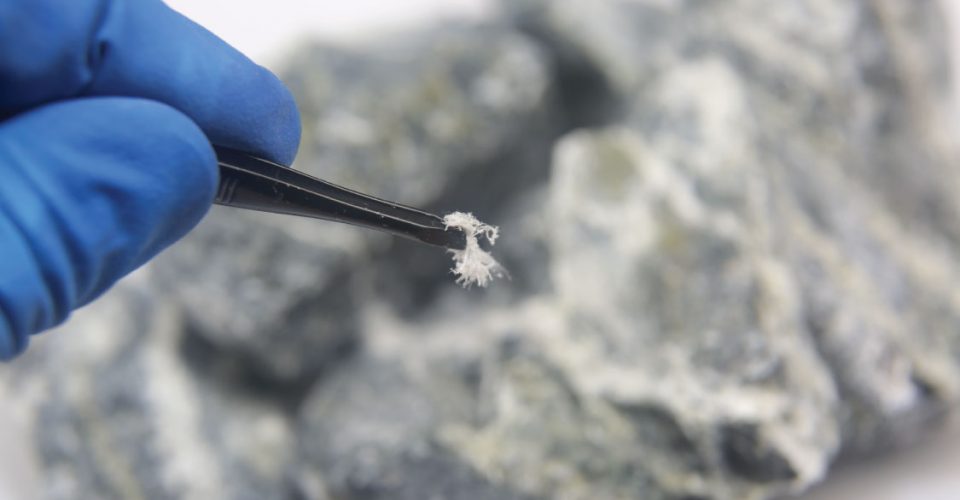How To Identify Asbestos
Unfortunately the manufacturing process means that asbestos no longer looks like its natural form (fig. a) and is actually unrecognisable.
It’s very rare that you would be able to identify asbestos, or an asbestos containing material, with the naked eye and the only way to tell for definite is to have an expert collect a sample and have it tested in a laboratory.
But that doesn’t mean you can’t protect yourself, your employees or your family by learning about the dangers of asbestos and where to look for likely asbestos containing materials to limit your chances of exposure.

Where to look for asbestos?
Asbestos was used in different forms for a variety of applications, and some of the most common include:
- Sprayed asbestos – used for fire protection coatings on steel and reinforced concrete beams and columns and as insulation on the underside of roofs.
- Asbestos lagging – used to thermally insulate water pipes and boilers.
- Asbestos insulating boards (AIB) – used as fire protection and for thermal insulation on wall partitions, ducts, soffits, ceiling and wall panels.
- Asbestos cement products (flat or corrugated sheets) – used for roofing and wall cladding, as well as guttering, rainwater pipes and water tanks.
- Textured coatings – such as decorative plaster and paint.
- Bitumen or vinyl materials – used for roof felt, floor and ceiling tiles.
When is the risk highest?
Asbestos is most dangerous if the asbestos fibres are disturbed, through deterioration or damage, and become airborne as it’s when the fibres are inhaled that they cause serious and fatal health risks. Those most at risk are likely to be construction workers, maintenance engineers and housekeeping and custodial employees, who could disturb it whilst undertaking their day-to-day tasks.
One of the most important things to consider when carrying out or supervising any maintenance, refurbishment or even a demolition of any building that definitely does or may contain hidden asbestos, is that you are responsible for its safe management.
Asbestos Surveys
As such it is essential you have any suspicious materials tested properly, so there are no nasty surprises. If you find asbestos you must employ a specialist company to assess the risk and decide whether it can be removed safely, or if it would be best to leave it undisturbed and take precautions to manage the risks it presents.
It’s best to contact a professional that deals with asbestos site surveys to assess the extent of the hazard than disturbing and disposing of it yourself.

